- Center on Health Equity and Access
- Clinical
- Health Care Cost
- Health Care Delivery
- Insurance
- Policy
- Technology
- Value-Based Care
Treating and Managing Head Lice: The School Nurse Perspective
School nurses often are the first healthcare professionalsto diagnose lice infestations in children.Although lice do not transmit disease, many schoolssend children home if they detect live head lice. It isthe position of the National Association of SchoolNurses that children who have been treated for liceinfestations should not be excluded from schoolbecause of the presence of residual nits.
The primary goals of the school nurse in controllinginfestations are to identify children with headlice and to break the cycle of reinfestation. Routinescreening of children for head lice is often part ofinfestation management policies in school districts.A thorough screening of a child's head can take severalminutes. If a school's policy is to screen all students,the total time for examination addssignificantly to the school nurse's caseload. The useof the school nurse's time for universal screeningmust be measured against other responsibilities,including health problem management, medicationmanagement, health assessments, and vision andhearing screening.
Once a child is identified as having lice, theschool nurse can play a key role in working with thechild's family to eradicate the infestation. Educationabout treatment options and environmental cleaningare topics the nurse can address with the family. Theschool nurse also can function as a case managerwho coordinates various aspects of treatment for anaffected child. Because infestations can be veryupsetting to students and to their families, the nursecan provide support and reassurance to the family asthe child is treated. Participation of school nurses indeveloping appropriate and consistent policies andprocedures within the school district is vital to theoverall management of infestations. Their efforts tocontrol and reduce infestations are necessary for theoverall health of the school population.
(Am J Manag Care. 2004;10:S273-S276)
Goals of Head Lice Management
The school nurse holds a unique and vitalrole in the diagnosis and management ofhead lice in children. As the primary healthcareprovider in a school, the nurse is oftenthe first health professional to assess a childfor the presence of head lice. While lice donot transmit disease, an infestation is a communityproblem that is innocently broughtinto the schools by children. It is the positionof the National Association of SchoolNurses (NASN) that children not be excludedfrom school following treatment forhead lice. But, because pediculosis can bealarming and disconcerting to students,their families, and members of the schoolcommunity, the school nurse's involvementis key to successful management.
The primary goals of the school nurse ineffectively managing lice infestation are towork with families to identify infested individuals,to break the cycle of infestations,and to return affected children to classquickly. Identification of infestationsrequires proper equipment and adequatetime for examination. Optimal examinationequipment includes a lighted magnifier withan ultraviolet light source. If a lighted magnifieris not available, at a minimum the schoolnurse should have a gooseneck lamp with atleast a 60-watt bulb. Disposable sticks orapplicators are recommended to separate thehair during examination. A thorough screeningof a student's head can take several minutesper student. When an entire classroomof 25 students must be assessed, the totaltime for examination represents a significantaddition to an already busy daily caseload inthe school health office. A positive identificationof infestation is indicated if live lice ornits are found.
The second step after identifying the presenceof head lice in a school population is tobreak the cycle of reinfestation through carefuland repeated communication with thefamilies of affected students. Parents must beeducated about appropriate pediculicidaltreatment and environmental cleaning, forexample. These activities are vitally importantin the successful treatment of an infestation,but there are many additional aspects tostopping infestations. These include promotingshared responsibility, developing appropriateand consistent management policiesand procedures, providing comprehensiveeducation, and outlining screening measuresand guidelines for special situations.
Shared Responsibility: A MultidisciplinaryApproach. School nurses can functionas case managers for many healthconcerns, but pediculosis is one in whichthey can provide a leadership role in workingwith others who must participate to successfullycontrol lice infestations. It is vitalthat all members of the school communityassume responsibility as part of the schoolteam, especially in areas where a schoolnurse may not be employed full time. As apart of this multidisciplinary approach, theschool nurse may have contact with the familyof an affected student, school administrators,members of the school community,and, ideally, the physician and pharmacistwho provide medical treatment. This effortcan be extensive and might involve morethan 1 household. Providing consistent andcomprehensive communication and leadershipto everyone involved produces the mostfavorable outcome for the student. Theschool nurse also must be able to coordinatecare while respecting the child's right toconfidentiality. In addition, the school nursemust be able to direct care in a manner thatpromotes the use of evidence-based treatmentsrather than home remedies conveyedthrough hearsay in the community.
Policies and Procedures. School districtsare advised to research and createsound and practical policies and proceduresfor dealing with pediculosis. These policiesshould be developed within the scope oflocal and state laws, public health guidelines,recommendations from the NASN, andwith the support of the district's schoolphysician, where there is one. The schoolphysician and the school nurse will find thatthe head lice clinical information from theAmerican Academy of Pediatrics and theposition statement of NASN are compatiblein treatment methodology, allowing for astrong collaborative approach between themedical and nursing disciplines.1,2
It is advisable for the school administrationto work with the school nurse to putpolicies and procedures in writing for theschool community to ensure consistent andappropriate care. A thorough proceduraldocument will include a description of licescreening processes to be followed by theschool, information about how parents andthe community will be notified of an infestation,and the treatment protocol. Specificparameters outlining when it is necessary tonotify public health officials of a significantoutbreak also should be included. Althoughthey are important, detailed proceduresmust be viewed as guidelines rather thanrigid rules, with each situation involvingsome individual consideration.
The implementation of nit-free or no-nitpolicies in schools has stirred concernamong healthcare providers. A pediculosisposition statement adopted by the NASN in1999, and revisited in 2004, states that nit-freepolicies disrupt the educational processand should not be viewed as an essentialstrategy in the management of head lice.Data do not support school exclusion fornits. Since no disease process is associatedwith head lice, schools are advised not toexclude students for nits remaining after licetreatment, although further monitoring forsigns of reinfestations is appropriate. Theschool nurse, as student advocate and nursingexpert, should be included in school district-community planning, implementation,and evaluation of vector control programsfor the school setting. The school nurseretains an important role in educating allconstituencies about pediculosis and dispellingmyths and stigmas regarding liceinfestation.1,3,4 School districts are advisedto address the issue of nit-free policies priorto a potential infestation.
Education. The school nurse has to beprepared to provide comprehensive educationto all stakeholders in the school communitywhen lice have been identified. Theeffectiveness of education is dependent onaddressing the specific needs of the group,such as language barriers or the level of educationof parents or guardians. It is importantto provide information proactively aswell as during infestations. The most effectiveapproach is to design and present informationin different formats to reach theintended audience in a way that is meaningfuland can be followed.
Providing quality education necessitatesstaying current with treatment practices andunderstanding misinformation that may beassociated with lice and the treatment ofinfestations. The school nurse should makeevery attempt to research and address misinformationabout lice and treatments for infestationprior to the dissemination of schoolinformation to give family members and othersa chance to ask questions and to learnabout the lice management practices recommendedby the school. Addressing misconceptionsprior to an infestation may expeditethe use of evidence-based treatments.
Screening Programs. Screening is definedas the identification of unrecognizedcases through examination, tests, or otherprocedures. The criteria for screening aredetermined by the nurse and the schooladministration. Some school districts chooseto screen all students when they enter classin the fall or return after school breaks.These universal school-based screenings areintensive, requiring substantial organizationand collaboration. Because of their comprehensivescope and the time required by theschool nurse to oversee them, universalscreenings should be considered only duringhigh rates of infestation. (High rates shouldbe defined by the district in their stated policiesand procedures.)
The use of school nurses' time for a generallice screening has to be measuredagainst their other responsibilities, includinghealth problem management, medicationmanagement, health assessments, visionand hearing screening, and many other vitalactivities. Some schools choose selectiveschool-based screening to evaluate only studentsin high-risk groups or students whoare symptomatic. In some cases, the schoolmay ask parents to examine their children,particularly before the first day of school.There is concern, however, regarding theadherence and accuracy of family-basedscreening. Family members may be inexperiencedin identifying lice and should be providedwith information and support if theysuspect that they have found lice.
A collaborative team approach to discerningthe needs of a particular school districtcan be determined by considering the historyand number of reported cases in theschool district, the seasonal incidence ofcases, and the community level of concernduring the year.
Role of the School Nurse
The school nurse is a key individual whocan offer reassurance and support for thefamily and act as an advocate. The nurse frequentlyhas the opportunity to establishrelationships with students and familiesand is often perceived as an ally. If a studentis identified as having an infestation, theschool nurse can offer support and encouragementthrough face-to-face conversation,frequent phone contact, or written materialthat can be sent home with the student. Inaddition to providing personal support, theschool nurse is an ideal case manager who,with the support of the school community,can be very effective in educating the familyand providing resources to help students andtheir families treat infestations.
Having lice may carry a significant socialstigma, so it is not unusual for parents tobecome distressed and openly upset whentheir child is diagnosed. Parents also mayfeel overwhelmed by treatment concerns,questions regarding pediculicides, and whatthey need to do to clean their homes, cars,and clothing to eradicate the infestation.The school nurse can provide support,advice, and information. When parents arewilling and able to adhere to a comprehensivetreatment approach, the chances oferadication of infestation and a positive outcomeare greatly increased.
Conclusion
The school nurse is often the first healthprofessional to assess a child for lice infestationand may be the first resource to helpparents care for their child. School nursesare responsible for the care of individualstudents, but they also have responsibilityfor the entire population of students. Theirefforts to control and reduce infestations arenecessary for the overall health of the schoolpopulation.
In addition to screening children forinfestations, the school nurse has manyresponsibilities including communicatingwith and educating school officials, students,parents, and other healthcare providers andoffering social support to families of affectedstudents. School nurses also play a vital rolein helping to shape school policies that balancethe need to control infestations withthe needs of students to continue their education.The NASN has reviewed the impactof nit-free policies that exclude affected childrenfrom class. These policies, which arewidely adopted by schools, disrupt the educationalprocess and are ineffective in preventingthe transfer of lice within the school.Administrators and others responsible forthe development of school policies and procedurescan benefit from working withschool nurses, who can provide the mostcurrent medical information to help schoolsmanage head lice infestations.
1. Nit Free Policies in the Management of Pediculosis.Position Statement. National Association of SchoolNurses. Available at: http://www.nasn.org/positions/nitfree.htm. Accessed on June 20, 2004.
Pediatrics.
2. Frankowski BL, Weiner LB; Committee on SchoolHealth the Committee on Infectious Diseases. AmericanAcademy of Pediatrics. Head lice. 2002;110:638-643.
Current Concepts in Pediculosis Management.
3. Vessey JA. National Association of School Nurses. 2000.
4. Management of Pediculosis in the School Community.Position Statement, National Association of SchoolNurses. In process, 2004.

